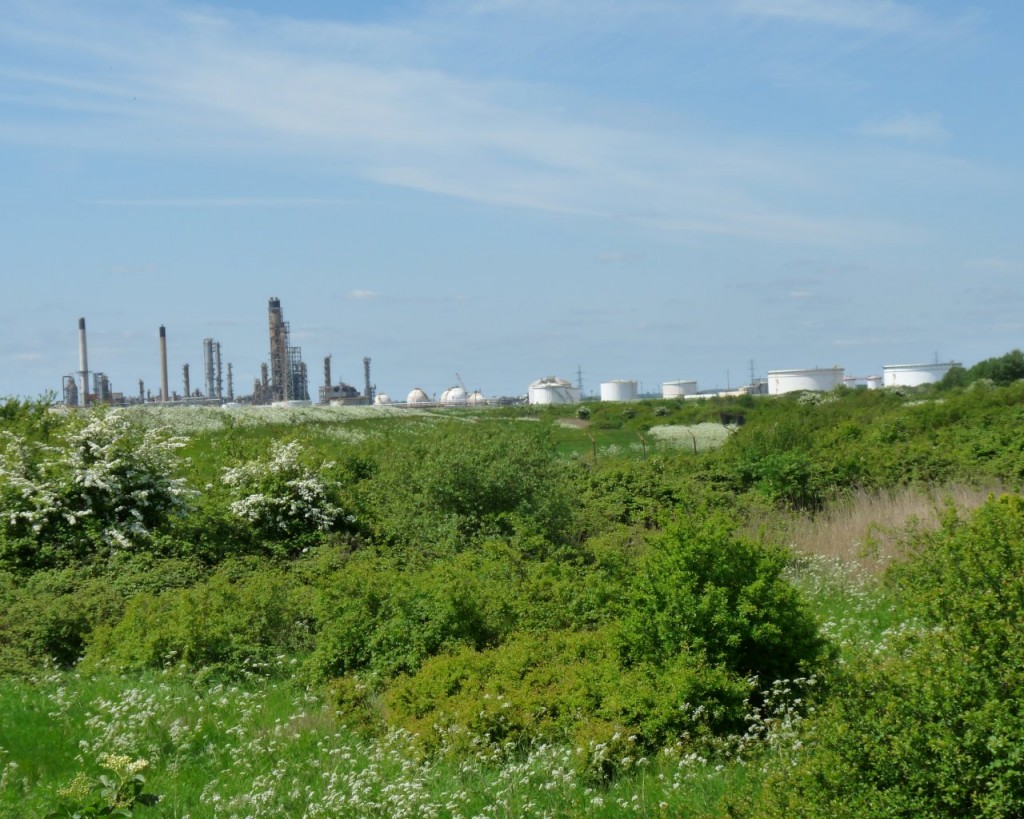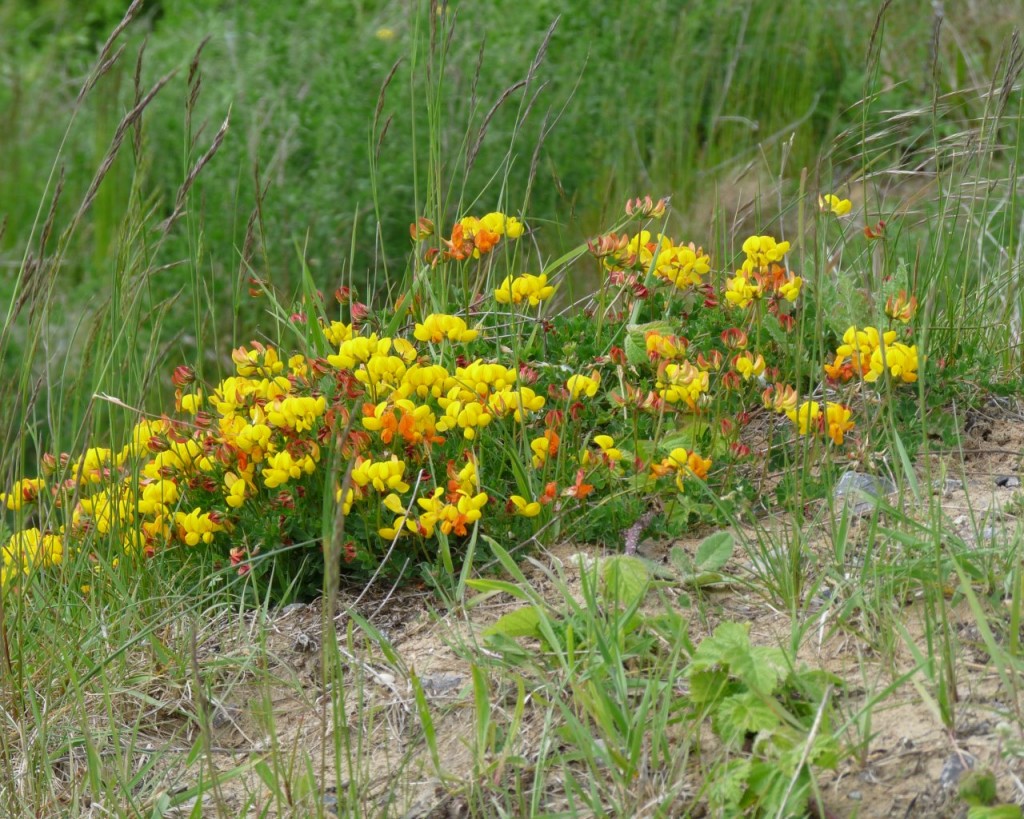

Half a dozen Wren members visited the Buglife reserve of Canvey Wick on Sunday 17th May. This brownfield site was going to be developed as a refinery, but the development was never completed and it is now reverting to a more natural state. We were blessed with sunny, dry weather, though the fresh breeze probably suppressed some flying insect activity. Over a hundred species were noted, including 50-odd species of plants (listed below), some of which are not familiar in the Wanstead area. Mary Holden found one of the day’s highlights: several Great Crested Newts in a ditch, which we were able to watch while we were having our lunch. Large Red Damselflies and at least one Hairy Dragonfly also frequented this ditch, with Azure Damselfly being seen nearby.
Parts of the site are very sandy and it was in one such area that two Latticed Heath moths were found, with a frustrating glimpse of a passing butterfly that I suspect was a Wall in the vicinity. Several other butterfly species included Green Hairstreak. Paul identified a specimen of Canadian Fleabane growing on a sandy hill; this was a plant must of us had never noticed before. Although not in flower, the presence of good numbers of Common Spotted Orchids was also exciting.
A few Barn Swallows were seen, although it wasn’t clear whether these were birds nesting nearby, or late migrants passing through. A pair of Cuckoos remained all the time we were there; given the number of Reed Warblers (a host species) singing in the Phragmites-lined ditches, they may be tempted to stick around.
Thanks to Paul for resolving many identification conundrums, for Kathy for compiling the list and taking the photographs, and for Pam, Mary and Gill for their keen eyes and good company.
Plants noted:
Trees:
- Ash
- Silver Birch
- Willow species
Grasses:
- Barren Brome (Bromus sterilis)
- Cock’s-foot
- Common Reed (Phragmites)
Wildflowers:
- Birdsfoot Trefoil
- Biting Stonecrop (Sedum acre)
- Black Medic
- Black Mustard
- Bramble
- Bristly Ox-tongue
- Broad-leaved Pea / Everlasting Pea
- Bulbous Buttercup
- Canadian Fleabane (the groundsel-looking plant on the sandy hill)
- Cleavers / Goosegrass
- Common Spotted Orchid
- Common Vetch
- Common Field Speedwell (Veronica persica)
- Cow Parsley
- Creeping Buttercup
- Creeping Thistle
- Cut-leaved Cranesbill
- Daisy (Bellis perennis)
- Dandelion
- Dog Rose
- Elder
- Fennel
- Forget-me-not (possibly Field Myosotis arvensis)
- Goat’s Rue
- Great Mullein
- Groundsel
- Hairy Tare
- Hawthorn
- Herb Robert
- Hogweed
- Horsetail species (probably Common, Equisetum arvense)
- Lesser Stitchwort
- Mallow
- Nettle
- Ox-eye Daisy
- Pink Garden Oxalis (Oxalis, possibly articulata)
- Ragwort species (possibly Common)
- Red Dead-nettle
- Ribwort Plantain
- Rosebay Willowherb
- (Round-leaved Wintergreen?)
- Shepherd’s Purse
- Snow-in-summer / Dusty Miller (Cerastium tomentosum)
- Sow-thistle species
- Spanish Bluebell
- Spotted Medic
- Teasel
- Tufted Vetch
- Wall Rocket (Diplotaxis species)
- Water Crowfoot species
- Wild Carrot
- Yarrow
- Yellow Flag Iris
Tim Harris, 19 May 2015